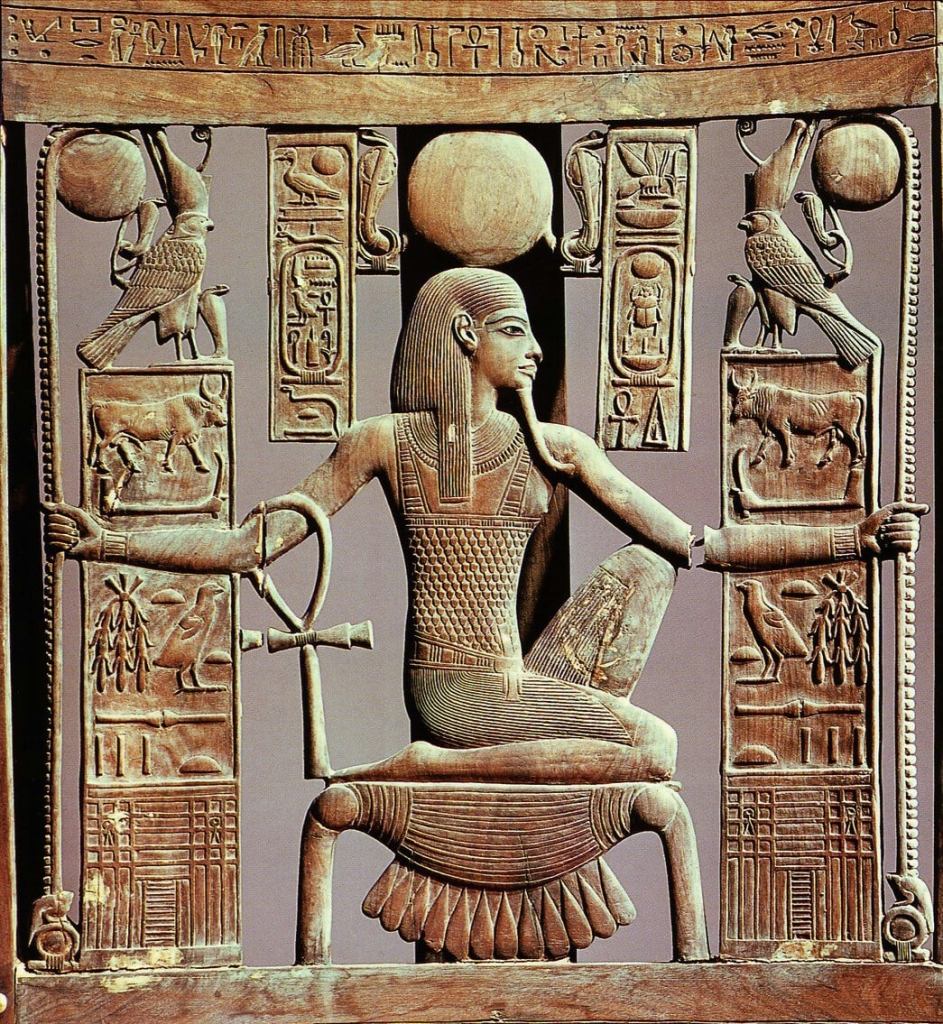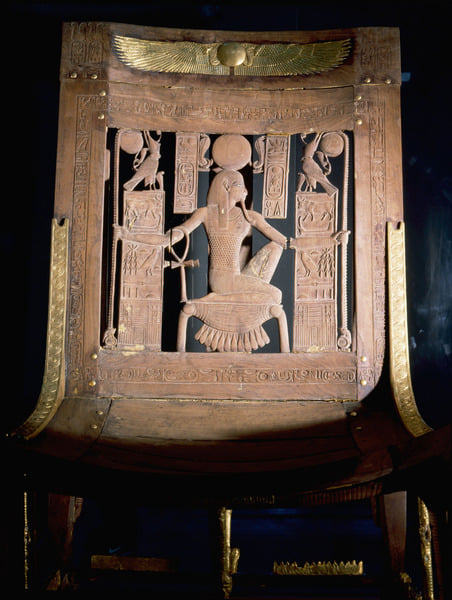Tutankhamun’s chair, discovered in his tomb by the famed archaeologist Howard Carter in 1922, stands as one of the finest examples of Ancient Egyptian craftsmanship. This ornate piece of royal furniture provides a unique insight into the grandeur of the New Kingdom and the cultural and religious values of the time. Crafted from wood and gilded in gold leaf, the chair is a stunning testament to the artistry and symbolism that permeated ancient Egyptian society.
Craftsmanship and Material
The chair’s most striking feature is its craftsmanship. Made from high-quality wood, the piece is covered in layers of gold leaf, creating a luxurious, shimmering effect that reflects the wealth and status of the young pharaoh, Tutankhamun. The gold leaf, a symbol of divinity, was intended to enhance the chair’s spiritual significance, elevating it from mere furniture to a powerful emblem of royal authority. The attention to detail in its design highlights the exceptional skills of Egyptian artisans, who mastered woodwork, metal plating, and intricate carving techniques.

The Depiction of Tutankhamun and Ankhesenamun
The backrest of the chair features a highly detailed carving that portrays Tutankhamun seated next to his queen, Ankhesenamun, in an intimate domestic scene. This rare and personal depiction emphasizes the importance of family and royal relationships during Egypt’s 18th Dynasty. The inclusion of the queen alongside the pharaoh highlights the role of the royal couple in maintaining the harmony of both the state and the divine order. It underscores the significant cultural value placed on familial bonds in ancient Egyptian society.
This scene is not only a portrayal of the royal family but also a reflection of the dynasty’s ideals. The couple’s affectionate positioning, captured in intricate detail, speaks to the idealized nature of royal life—one of unity, power, and divine favor. The use of personal imagery in a royal object is also a reminder of the human aspect of kingship, linking the ruler to the everyday experiences and values of his people.
Symbolism and Inscriptions
In addition to the depiction of the royal couple, the chair is adorned with significant hieroglyphic inscriptions and symbolic imagery. Among the most notable are the solar disk and lotus flowers, two symbols with deep spiritual meaning. The solar disk, often associated with the sun god Ra, represents divine protection and eternal life, reinforcing the belief in the pharaoh’s role as the divine ruler who maintains harmony between the gods and humanity. The lotus flower, a symbol of creation and rebirth, further highlights the Egyptian philosophy of cyclical renewal and immortality.

These symbols were intentionally incorporated into the design of the chair, reflecting the religious and political ideologies of the time. The imagery links Tutankhamun to the gods and suggests that his reign, though brief, was divinely sanctioned. The chair was not simply a functional object; it was a powerful tool for reinforcing the pharaoh’s divine status and his connection to the eternal.
Preservation and Legacy
The chair’s preservation for over 3,000 years is a testament to the skill of both the artisans who created it and the care taken in its placement within Tutankhamun’s tomb. Located in the Valley of the Kings, the tomb remained largely intact until its discovery in the early 20th century, allowing the chair and other treasures to survive in remarkable condition. Today, it serves as a key artifact for understanding the opulence of Tutankhamun’s reign and offers a glimpse into the world of royal Egypt during the New Kingdom.
The chair is more than just a piece of furniture; it is a symbol of royal power, cultural ideals, and divine favor. It provides invaluable insights into the grandeur of the pharaoh’s court, the religious practices of the time, and the artistry that defined ancient Egyptian civilization.
Conclusion
Tutankhamun’s chair stands as one of the most extraordinary and significant artifacts discovered in the tomb of the young pharaoh. Through its craftsmanship, symbolism, and intimate depiction of the royal couple, it offers a window into the opulence, culture, and spirituality of Ancient Egypt. The chair is not only a masterpiece of furniture design but also a powerful reminder of the pharaoh’s divine role in Egyptian society and his connection to the gods. As one of the treasures of Tutankhamun’s tomb, it continues to captivate historians and visitors alike, serving as a testament to the enduring legacy of ancient Egyptian civilization

